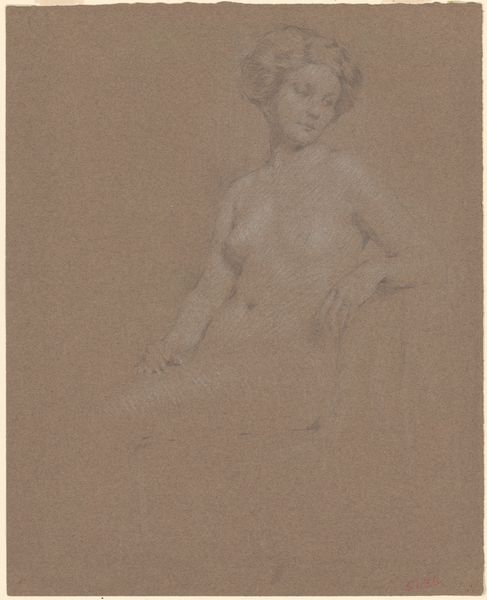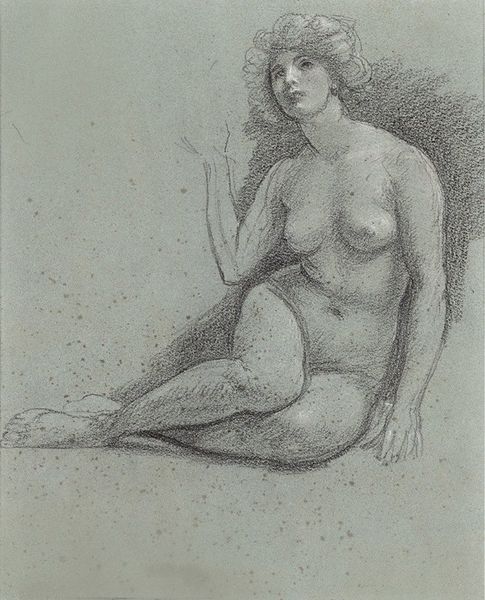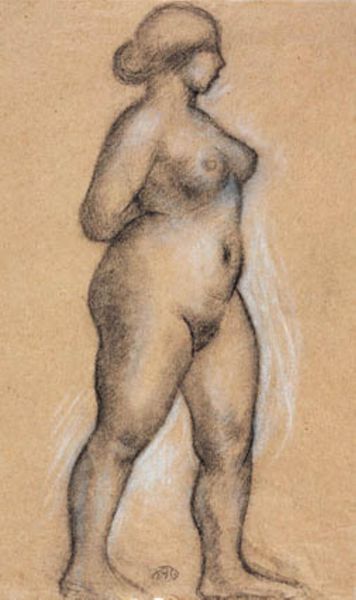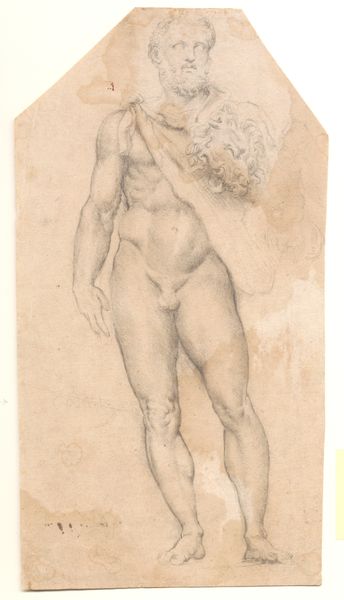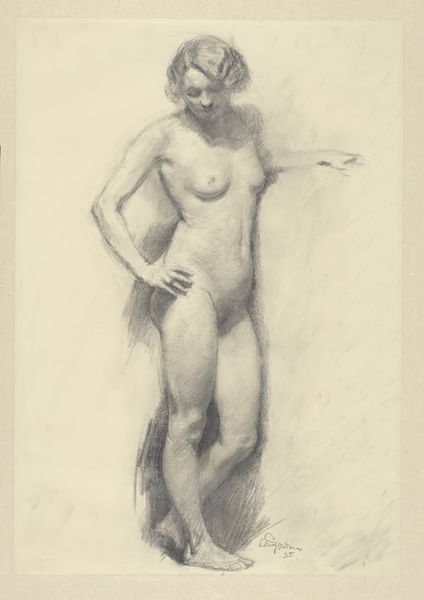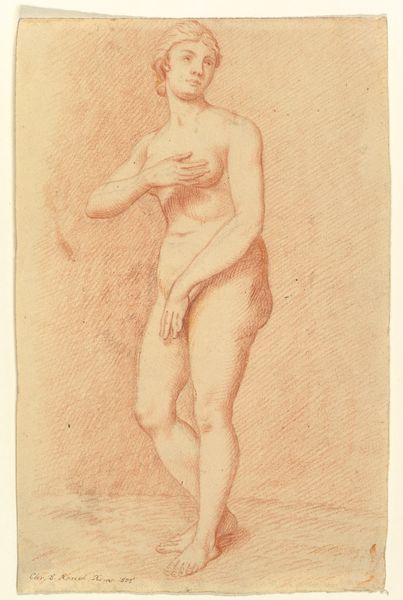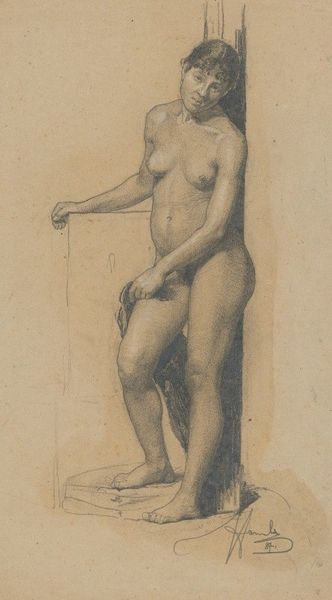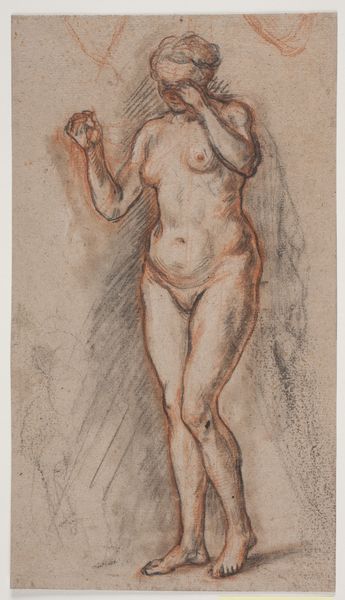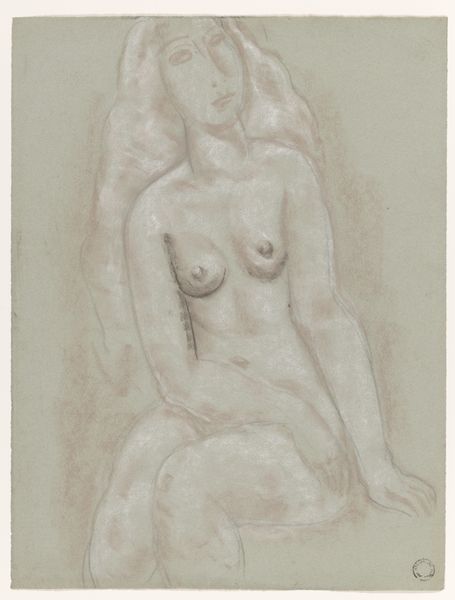
drawing, charcoal
#
portrait
#
drawing
#
charcoal drawing
#
romanticism
#
charcoal
#
nude
Dimensions: 13 1/8 x 8 5/8 in. (33.34 x 21.91 cm)
Copyright: Public Domain
Editor: This is Pierre-Paul Prud'hon’s “A Seated Female Nude,” created around 1793. It's a charcoal drawing and there is an ethereal, almost dreamlike quality to the work. The textures are smooth but contrast strongly against the lighter background. How would you interpret Prud'hon's artistic choices here? Curator: Precisely, the textural play is crucial. Observe the strategic use of chiaroscuro. Light isn't just illuminating; it sculpts the form. The softness comes from the manipulation of the charcoal, a medium that lends itself to both delicate gradations and strong contrasts. The structural integrity relies not only on line but on tone. Do you note how the light seems to coalesce around her face and torso, leaving the edges of the form softer, less defined? Editor: Yes, definitely. There is a focus that makes my eyes travel there first, which also exaggerates the depth of the image. Why do you think Prud'hon chose charcoal as his medium? Curator: The selection of charcoal underscores Prud'hon’s engagement with Romantic ideals, where emotionality and atmosphere are paramount. Charcoal allowed him to capture the subtle nuances of light and shadow, emphasizing the sensuality and idealized form, without the crispness of line that might come from pen and ink. Think about the "sfumato" effect – similar to that which we find in da Vinci. What is evoked by the absence of precisely delineated lines? Editor: A sense of movement, perhaps, and a vulnerability that makes the artwork very approachable. It’s like she is in the process of becoming rather than fixed. Curator: Indeed, and perhaps that's where Romanticism breathes—not in the definite, but in the infinite potential of form and feeling. Editor: That's such an insightful point; thank you for shedding light on this piece, so to speak.
Comments
No comments
Be the first to comment and join the conversation on the ultimate creative platform.
